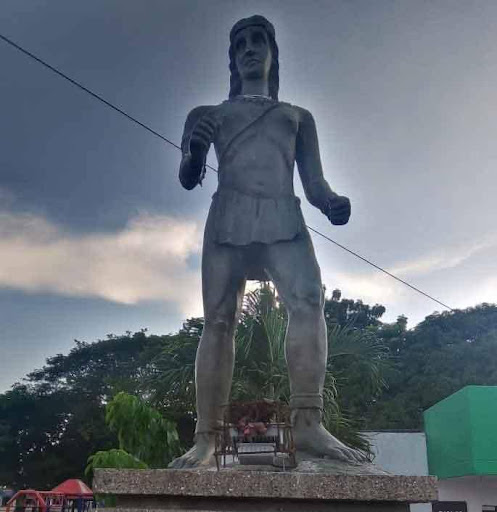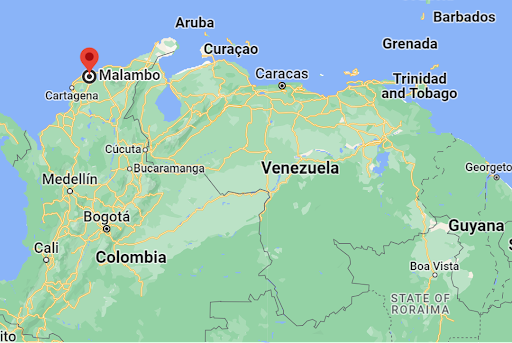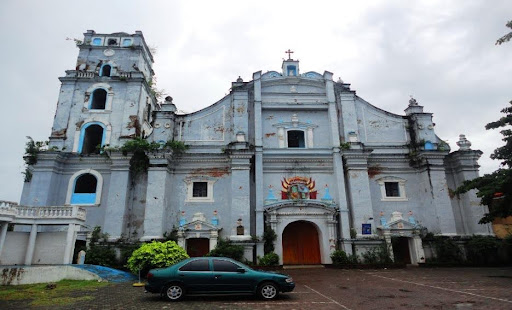Malambo
Department
Atlántico, Colombia

Flag of the city
The flag of the municipality of Malambo in Atlántico has an intriguing history. During the period of independence and the formation of the Sovereign State of Cartagena in 1812, a republican flag was introduced. This flag, known as “Cuadrilonga,” consists of three elongated rectangles in red, yellow, and green colours, and in its centre stands out an eight-pointed white star. Although there have been many speculations about the meaning of these elements, no document has been identified that clarifies their precise symbolism. A popular interpretation suggests that the eight points of the star represent the eight original provinces of the Sovereign State of Cartagena. It is worth noting that this flag played a prominent role in history, as it was adopted by Bolívar during the Admirable Campaign of 1812 that resulted in the liberation of Caracas. Bolívar proudly carried this flag, an emblem that is also shared by Barranquilla and Malambo, due to their connection with the former State (previously Province) of Cartagena, to which both cities belonged.


Slogan of the city
Malambo is recognized for its industrial areas that significantly contribute to the economy of the Atlántico Department, hosting a range of businesses and manufacturing facilities.
History
Malambo, located in the Atlántico Department of Colombia, has a rich history that spans centuries. Before the arrival of the Spanish in the 16th century, the region was home to indigenous peoples with their distinct cultures and societies. However, with Spanish colonization, these indigenous communities faced significant challenges, from diseases introduced by the Europeans to forced labor and cultural shifts. Over time, the Spanish established their own settlements, customs, and governance in the region. By the early 19th century, the desire for independence began to swell across Colombia, with areas around Malambo playing their role in the broader movements and battles that eventually led to the creation of the Republic of Colombia. As the years progressed, Malambo transitioned from a primarily agricultural focus to embrace a variety of economic activities, notably the establishment of prominent industrial zones in the 20th and 21st centuries. Its geographical closeness to Barranquilla has been a significant factor in its economic and cultural evolution. Furthermore, the latter part of the 20th century and the dawn of the 21st saw Malambo developing its infrastructure, leveraging its strategic position near major transportation routes and Barranquilla.

Geography
Malambo is a strategically situated municipality in the Atlántico Department of northern Colombia. With 10.8596° N, 74.7739° W coordinated at the elevation point of Approximately 30 meters (98 feet) above sea level. While it doesn’t possess a coastline, its proximity to the Caribbean Sea and its location south of it are noteworthy. Another significant geographical facet is its closeness to Barranquilla, the departmental capital and one of Colombia’s primary urban centers. This relationship has deeply influenced Malambo’s economic and infrastructural growth. In terms of topography, Malambo lies within the broader Caribbean plains of Colombia, marked by its predominantly flat terrain. The region’s hydrography is enhanced by its nearness to the Magdalena River, a major river that plays a pivotal role in trade and transportation as it flows northwards into the Caribbean Sea. The tropical climate of Malambo ensures warm temperatures year-round, punctuated by distinct dry and rainy seasons.

Population
139,566(2020)
One photo representative of the city
One of the representative places in Malambo, Atlántico, is the Church of San Nicolás de Tolentino (Iglesia de San Nicolás de Tolentino). This church stands as a historical and architectural landmark in the city. Like many towns and cities in Colombia, the main church or cathedral often serves not just as a religious center but also as a focal point for community gatherings and events. It’s a testament to the city’s history, culture, and faith.

Etymology
The etymology of “Malambo” traces back to the indigenous peoples that once inhabited the region. The word “Malambo” is believed to come from the Amerindian language, often interpreted as related to water, which makes sense given the town’s proximity to significant water bodies, like the Magdalena River.
What the city is known or famous for
Malambo is particularly known for its Industrial Zone, which has played a significant role in the economic development of the Atlántico Department, attracting various businesses and industries to the region.
